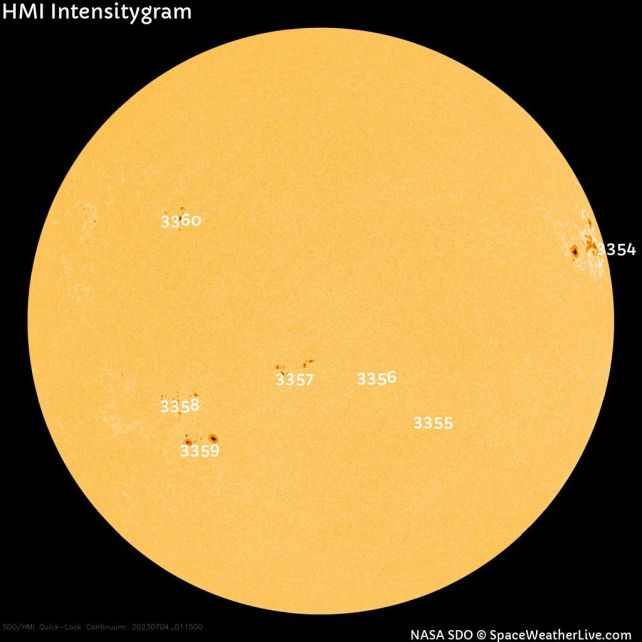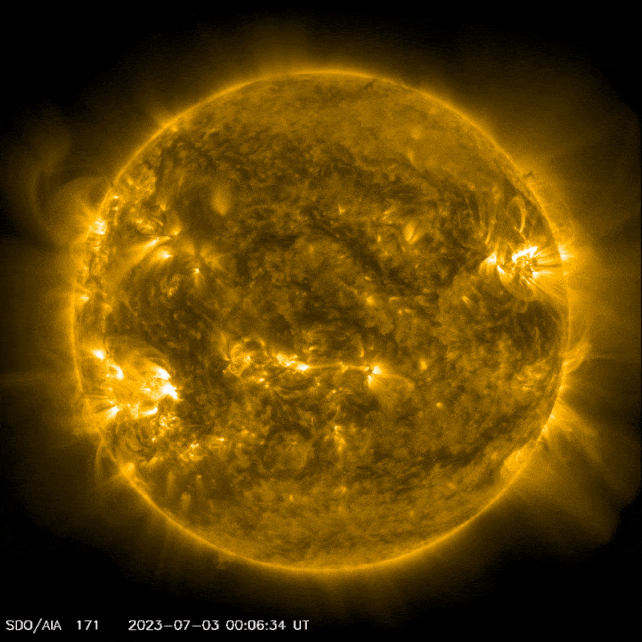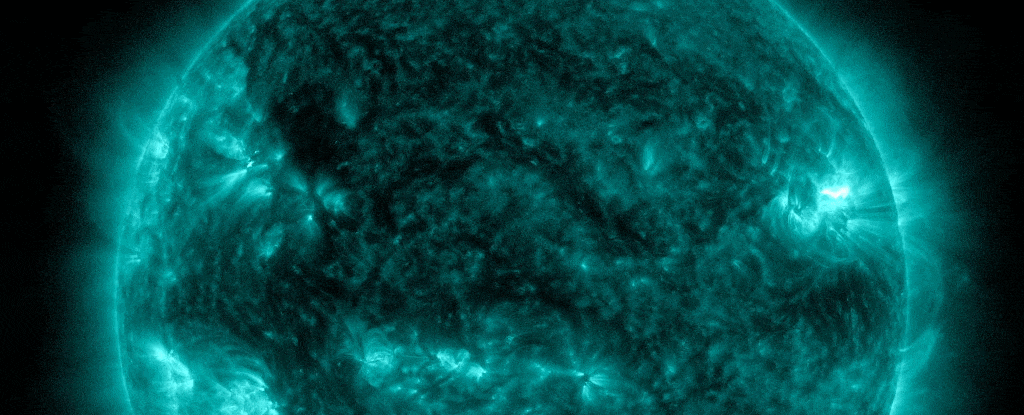The Sun recently erupted in a flare that caused a brief but intense radio blackout in the western US and the Pacific Ocean as it lashed Earth's upper atmosphere.
On 2 July 2023, at 7.14 PM Eastern Standard Time, an active sunspot region called AR 3354 unleashed an X-class solar flare – the most powerful category of which our Sun is capable.
Coming in at X1.0 (the biggest ever was X28, recorded nearly 20 years ago), the flare ionized Earth's upper atmosphere, interfering with high-frequency radio signals on the side of Earth that was facing the Sun at the time.
As serious as it might sound, the impact on Earth was milder than it could have been as the flare died down without further incident. Astronomers saw no sign of a coronal mass ejection that commonly accompanies such events, which would have launched streams of plasma far into space.
The eruption was consistent with the upward trajectory of the current solar cycle, and suggests we have some rowdy months ahead as we head towards the impending 11-year peak of solar activity. According to the Royal Observatory of Belgium, sunspot counts have reached a 21-year high, with the average for June hitting 163 sunspots a day.

This sort of activity is pretty normal for the Sun. It goes through peaks and lows of activity, called solar maximum and solar minimum, every 11 years. It's not known entirely what drives these cycles, but we record it based on sunspot numbers. This is because the Sun's magnetic field controls its activity, and sunspots are temporary regions where magnetic fields are particularly strong.
Solar flares and coronal mass ejections are produced by magnetic field lines snapping and reconnecting, often at sunspot sites. This produces a burst of energy, which manifests as a solar eruption. The more sunspots on the Sun, the more frequently these bursts occur.
The last solar minimum, and the end of Solar Cycle 24, was recorded in 2020. We're now in Solar Cycle 25, headed for solar maximum some time around July 2025. But this solar cycle is a bit outside what we were expecting, with NASA and the NOAA anticipating the cycle to peak relatively quietly at around 115 sunspots at solar maximum.
It's not entirely clear why the Sun has been significantly more active than official predictions suggested. Watching it unfold could reveal more about what happens inside the Sun – something we don't have a very clear picture of – and allow us to make better predictions going forward.

This is important, because as the recent flare shows, solar activity can affect us here on Earth, and not just in the form of radio blackouts. A powerful enough flare can interfere with satellite communications, including navigation. It can cause power grid fluctuations and blackouts. It can disrupt migratory behavior in animals.
In 1859, a coronal mass ejection produced a solar storm called the Carrington Event that resulted in catastrophic failure of telegraph systems. We've yet to record anything so powerful since, but it's a distinct possibility that could, experts say, change the world.
The strongest solar cycle on record took place between 1954 and 1964. At its peak, we recorded a maximum of 285 sunspots.
Solar Cycle 25 is not quite there, yet, but scientists have predicted it could be one of the strongest ever recorded, and we certainly seem to be on track for that. Let's hope that, from this wild solar weather, we can learn something new about the mysterious inner workings of our beautiful home star.
